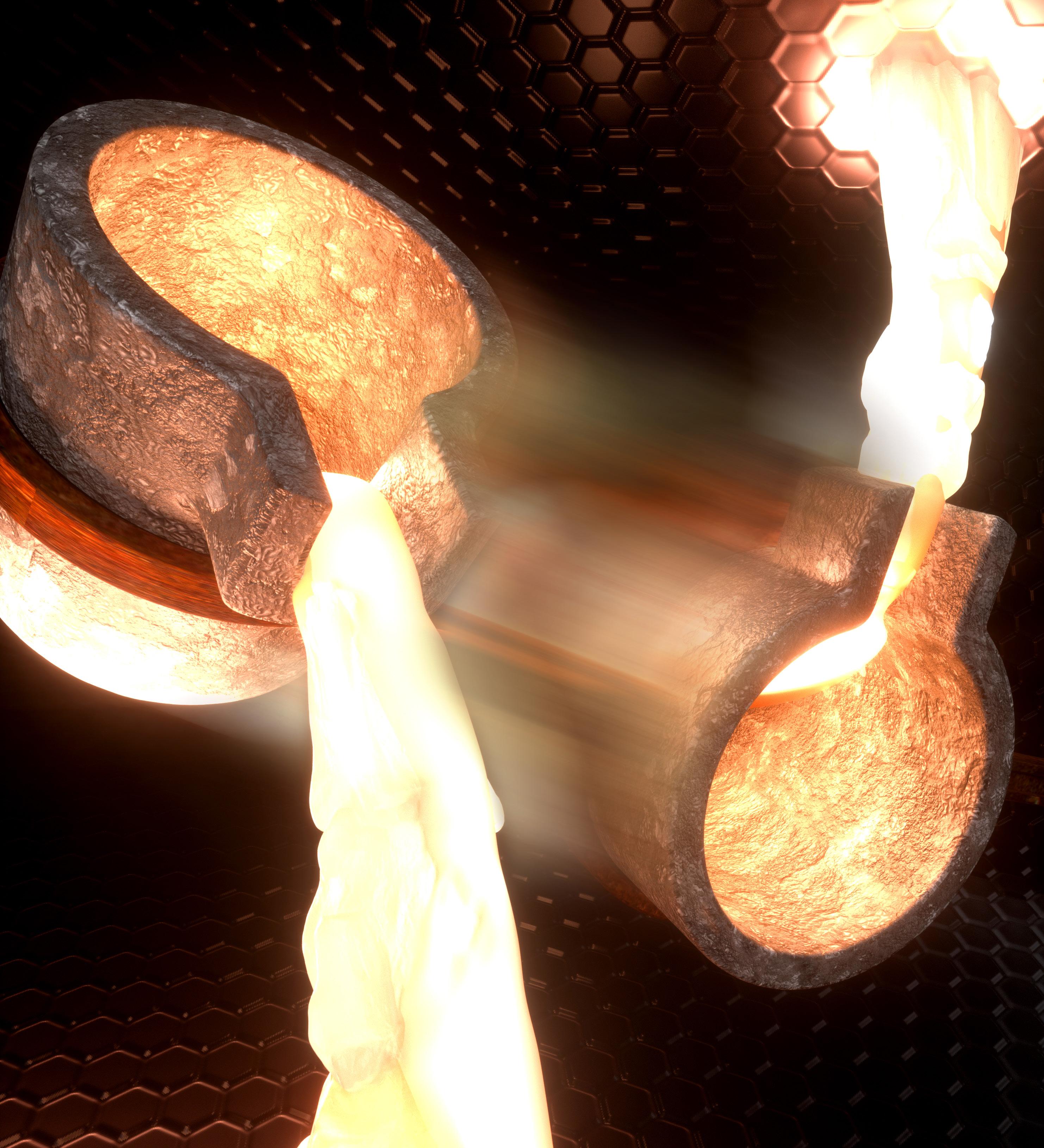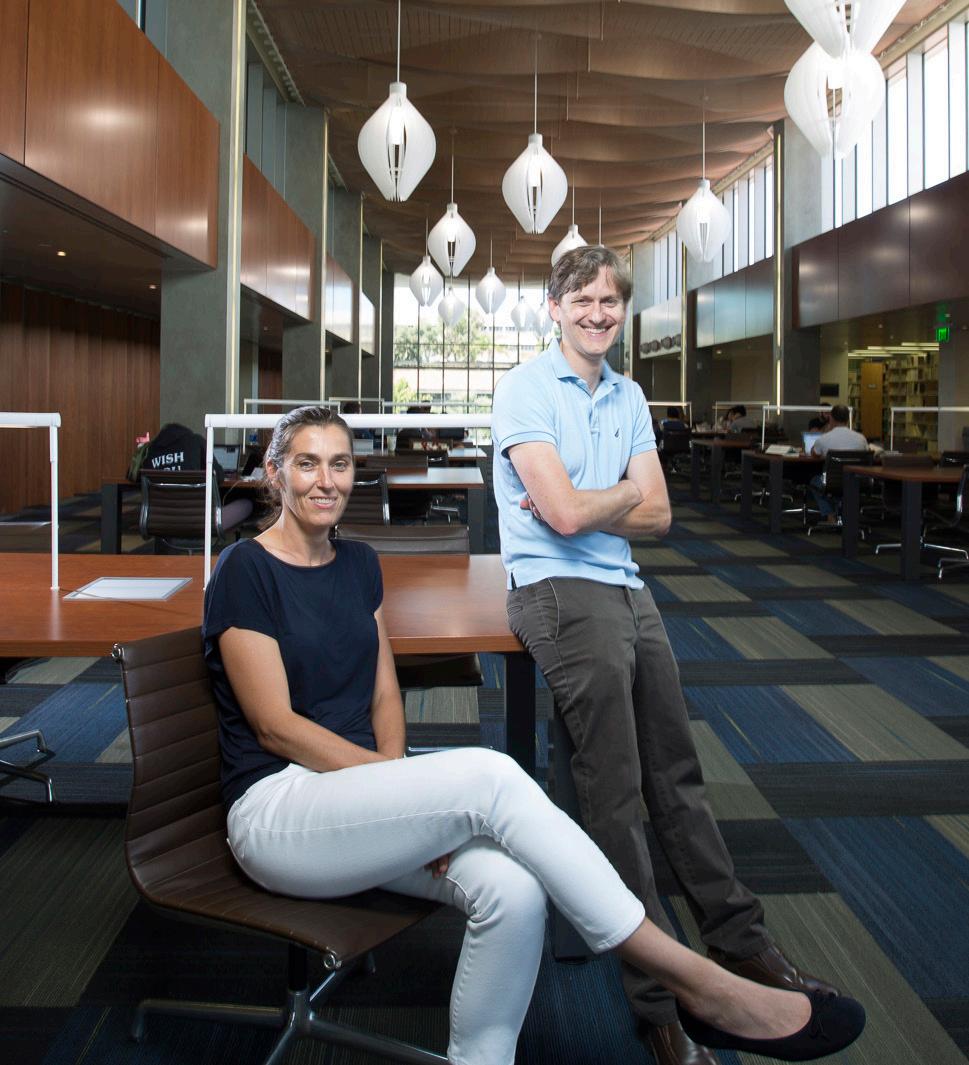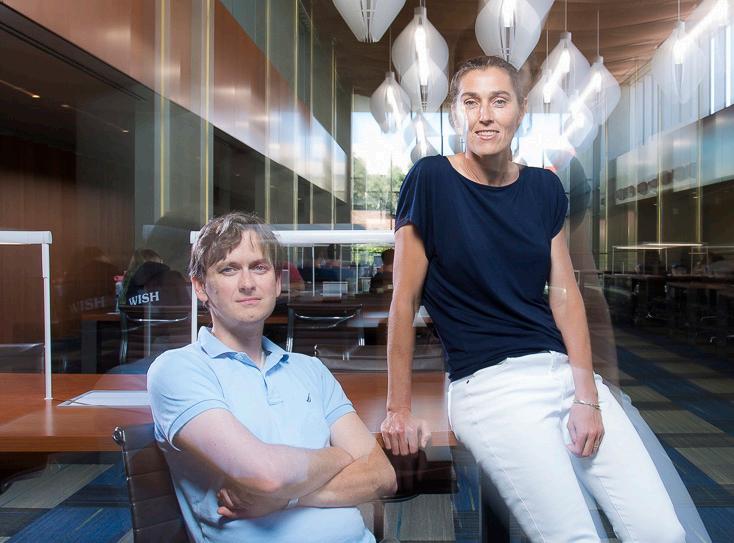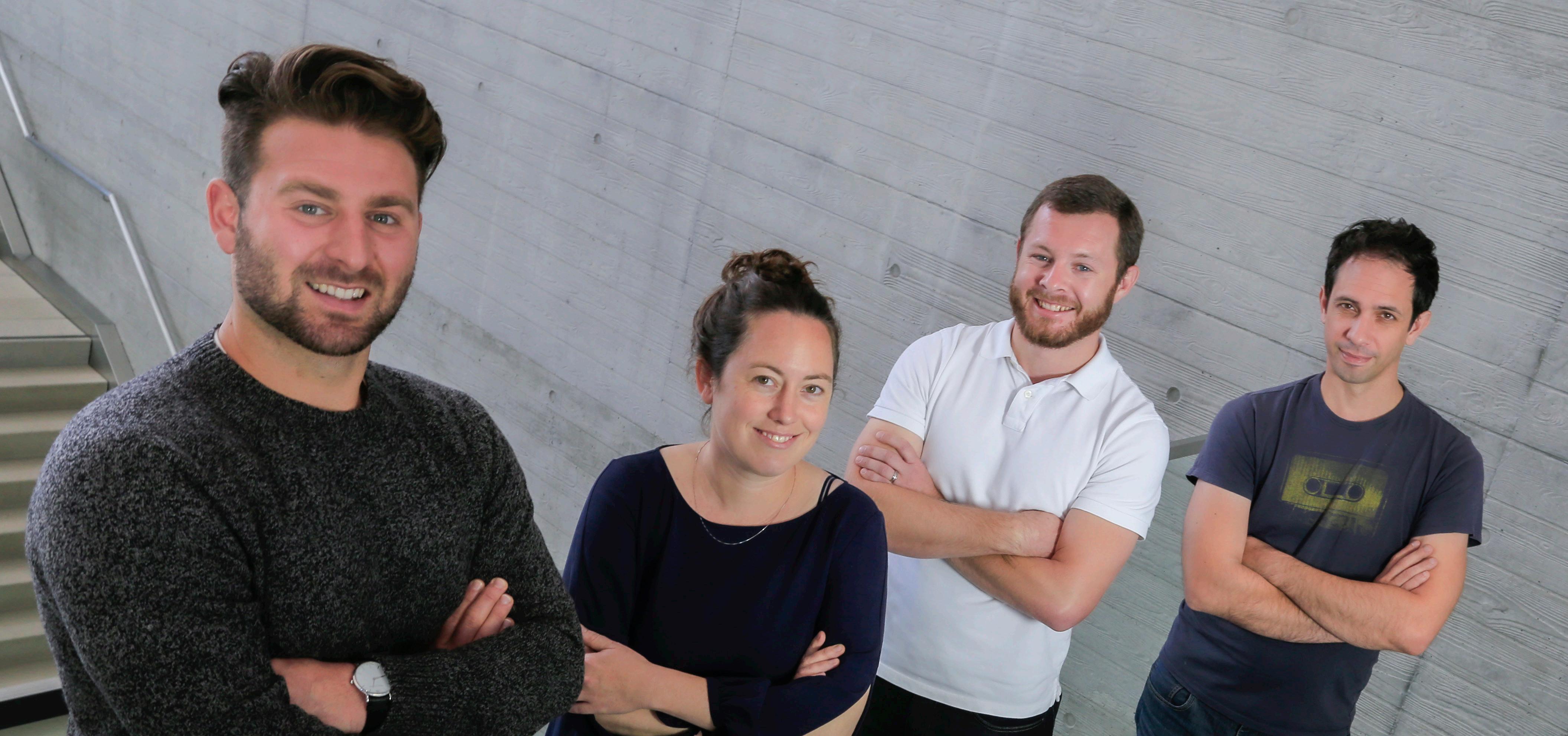
7 minute read
UCSB’s Quantum Leap The university is chosen as the site of the nation’s fi rst Quantum Foundry
from Convergence
by jackliu

UCSB’S QUANTUM LEAP
Advertisement
The university is selected as the site of the nation’s fi rst NSF-funded Quantum Foundry, a center for the development of materials for quantum information–based technologies
We hear a lot these days about the coming quantum revolution. Efforts to understand, develop, and characterize quantum materials — defi ned broadly as those displaying characteristics that can be explained only by quantum mechanics and not by classical physics — are intensifying. Researchers around the world are racing to understand these materials and harness their unique qualities to develop revolutionary quantum technologies for quantum computing, communications, sensing, simulation, and other quantum technologies not yet imaginable.
In September, UC Santa Barbara stepped to the front of that worldwide research race by being named the site of the nation’s fi rst Quantum Foundry. Funded by an initial six-year, $25-million grant from the National Science Foundation (NSF), the project, known offi cially as the UC Santa Barbara NSF Quantum Foundry, will involve twenty faculty members from the campus’s materials, physics, chemistry, mechanical engineering and computer science departments, plus myriad collaborating partners. The new center will be anchored within the California Nanosystems Institute (CNSI) in Elings Hall.
The grant provides substantial funding to build equipment and develop tools necessary to the effort. It also supports a multi-front research mission comprising collaborative interdisciplinary projects within a network of university, industry, and national-laboratory partners to create, process, and characterize materials for quantum information science. The foundry will also develop outreach and educational programs aimed at familiarizing students at all levels with quantum science, creating a new paradigm for training students in the rapidly evolving fi eld of quantum information science, and engaging with industrial partners to accelerate development of the coming quantum workforce.
“We are extremely proud that the National Science Foundation has chosen UC Santa Barbara as the home of the nation’s fi rst NSFfunded Quantum Foundry,” said Chancellor Henry T. Yang. “The award is a testament to the strength of our university’s interdisciplinary science, particularly in materials, physics, and chemistry, which lie at the core of quantum endeavors.
“Under the direction of physics professor Ania Bleszynski Jayich and materials professor Stephen Wilson, the foundry will provide a collaborative environment for researchers to continue exploring quantum phenomena, designing quantum materials, and building instruments and computers based on the basic principles of quantum mechanics,” Yang added.
“Being selected to build and host the nation’s fi rst Quantum Foundry is tremendously exciting and extremely important,” said Rod Alferness, dean of the College of Engineering. “It recognizes the vision and the decades of work that have made UC Santa Barbara a truly worldleading institution worthy of assuming a leadership role in a mission as important as advancing quantum science and the transformative technologies it promises to enable.”
“Advances in quantum science require a highly integrated IT RECOGNIZES THE VISION AND THE DECADES OF WORK THAT HAVE MADE UC SANTA BARBARA A TRULY WORLDLEADING INSTITUTION. ” “
interdisciplinary approach, because there are many hard challenges that need to be solved on many fronts,” said Bleszynski Jayich. “One of the big ideas behind the foundry is to take these early theoretical ideas that are just beginning to be experimentally viable and use quantum mechanics to produce technologies that can outperform classical technologies.”
Doing so, however, will require new materials. “Quantum technologies are fundamentally materialslimited, and there needs to be some sort of leap or evolution of the types of materials we can harness,” noted Wilson. “The foundry is where we will try to identify and create those materials.”

Research Areas and Infrastructure Quantum Foundry research will be pursued in three main areas, called “thrusts”: • Natively Entangled Materials, which relates to identifying and characterizing materials that intrinsically host anyon excitations and long-range entangled states with topological, or structural, protection against decoherence. These include new intrinsic topological superconductors and quantum spin liquids, as well as materials that enable topological quantum computing. • Interfaced Topological States, in which researchers will seek to create and control protected quantum states in hybrid materials. • Coherent Quantum Interfaces, where the focus will be on engineering materials having localized quantum states that can be interfaced with various other quantum degrees of freedom (e.g. photons or phonons) for distributing quantum information while retaining robust coherence.
“Developing these new materials and assessing their potential for hosting the needed coherent quantum state requires specialized equipment, much of which does not exist yet,” Wilson said. “A signifi cant portion of the NSF grant is designated to develop such infrastructure, both to purchase required tools and equipment and to fabricate new tools necessary both to grow the materials and characterize their quantum states.”
UCSB’s deep well of shared materials growth and characterization infrastructure was also a factor in securing the grant. The foundry will leverage existing facilities, such as the large suite of instrumentation shared via the Materials Research Lab and the California Nanosystems Institute, multiple molecular beam epitaxy (MBE) growth chambers (the university has the largest number of MBE apparatuses in academia), unique optical facilities such as the Terahertz Facility, stateof-the-art clean rooms, and others among the more than 300 shared instruments on campus. Data Science NSF is keenly interested in both generating and sharing data from materials experiments. “We are going to capture foundry data and harness it to facilitate discovery,” said Wilson. “The idea is to curate and share data to accelerate discovery at this new frontier of quantum information science.” Industrial Partners Industry collaborations are an important part of the foundry project. UC Santa Barbara’s well-established history of industrial collaboration — it is among the leading universities in the U.S. in terms of industrial research dollars per capita — and the application focus that allows it to to transition ideas into materials, NSF Quantum Foundry co-directors Stephen Wilson and Ania Bleszynski Jayich.

and materials into technologies, was important in receiving the foundry grant. Another value of industrial collaboration, Wilson explained, is that often, faculty might be looking at something interesting without being able to visualize how it might be useful in a scaledup commercial application. “If you have an array of directions you could go, it is essential to have partners to help you visualize those having near-term potential,” he said.
“This is a unique case where industry is highly interested while we are still at the basic-science level,” said Bleszynski Jayich. “There’s a huge industry partnership component to this.” Among the ten inaugural industrial partners are Microsoft, Google, IBM, Hewlett Packard Enterprises, HRL, Northrop Grumman, Bruker, SomaLogic, NVision, and Anstrom Science. Microsoft and Google already have substantial campus presences; Microsoft’s Quantum Station Q lab is here, and UC Santa Barbara professor and Google chief scientist John Martinis and a team of his PhD student researchers are working with Google at its offi ce, adjacent to campus, to develop Google’s version of a quantum computer.
Undergraduate Education In addition, with approximatelys seven hundred students, UC Santa Barbara’s undergraduate physics program is the largest in the U.S. “Many of these students, as well as many undergraduate engineering and chemistry students, are hungry for an education in quantum science, because it’s a fascinating subject that defi es our classical intuition, and on top of that, it offers career opportunities. It can’t get much better than that,” Bleszynski Jayich said.
Graduate Education Program Another major goal of the foundry project is to integrate quantum science into education and to develop the quantum workforce. The traditional approach to quantum education at the university level has been for students to take physics classes focused on the foundational theory of quantum mechanics.
“But there is an emerging interdisciplinary component of quantum information that people are not being exposed to in that approach,” Wilson explained. “Having input from many overlapping disciplines in both hard science and engineering is required, as are experimental touchstones for trying to understand these phenomena. Student involvement in industry internships and collaborative research with partner companies is important in addressing that.”
“We want to introduce a more practical quantum education,” Bleszynski Jayich added. “Normally, you learn quantum mechanics by learning about hydrogen atoms and harmonic oscillators, and it’s all theoretical. We want to supplement that by leveraging our abilities gained in the past twenty to thirty years to control a quantum system on the singleatom, single-quantum-system level. Students will take lab classes where they can manipulate quantum systems and observe the highly counterintuitive phenomena that don’t make sense in our classical world. And, importantly, they will learn various cuttingedge techniques for maintaining quantum coherence.
“That’s particularly important,” she continued, “because quantum technologies rely on the success of the beautiful, elegant theory of quantum mechanics, but in practice we need unprecedented control over our experimental systems in order to observe and utilize their delicate quantum behavior.”










